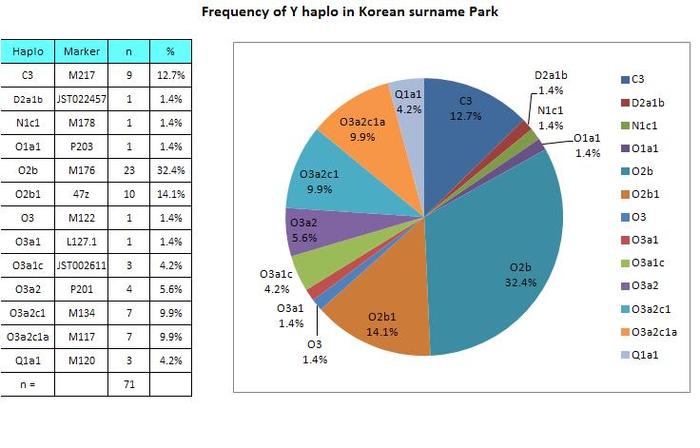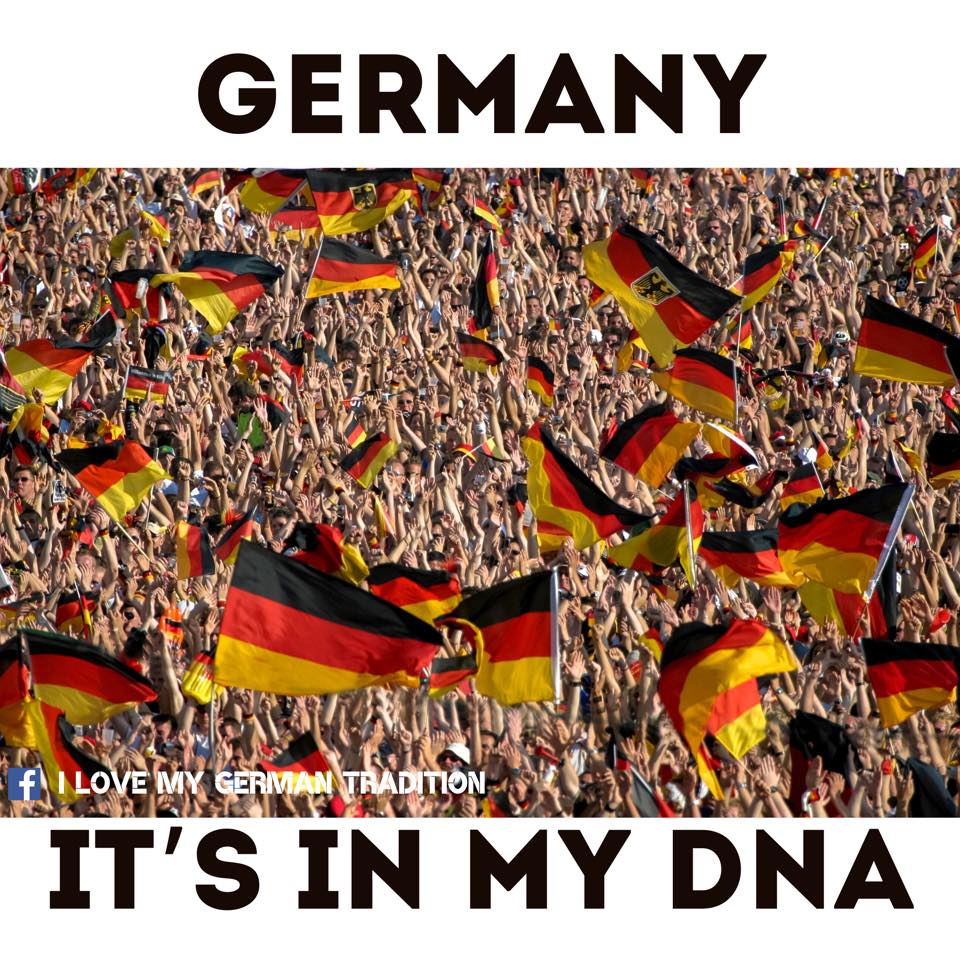by Pauline Park
23andme tells me I’m Korean, Chinese and Japanese, but in fact, while I was born in Korea, I have no Korean genes or any Chinese or Japanese DNA either; and therein hangs a tale… I came across this curious map (http://brilliantmaps.com/europe-dna-borders/ “If European Borders Were Drawn By DNA Instead of Ethnicity,” 25 June 2017) on the BrilliantMaps.com website, with no author listed, the map itself not original but taken (with attribution) from MapPorn’s feed on Reddit, apparently without any attribution to an individual author. The map is a curious one for many reasons, not least because it superimposes y-DNA haplogroups on a map of Europe and the Middle East with the leading haplogroup in each country represented on the map.
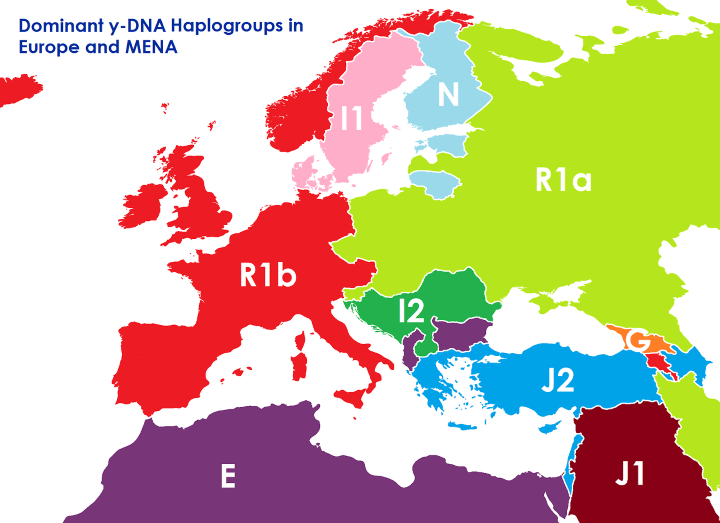
Brilliant Maps claims to be ‘Making Sense Of the World, One Map At A Time,’ but this particular map makes no sense of the complex world of genes precisely because they have nothing to do with national boundaries and those boundaries defy any attempt to capture such gene pools by country. This is my first blog post about science and there is a reason for that: I have absolutely no expertise in the physical sciences, much less genetics, and contrary to the stereotype of Asian Americans being whizzes at science and math, those were my worst subjects in school; but I do have some background in the social sciences and in poststructuralist theory as well as in nationalism as a field of study, and as a transracial intercountry adoptee born in Korea but raised by parents of European descent, I am especially interested in how national identity is constructed and articulated; and it seems to me that DNA testing has provided companies such as 23andme.com and Ancestry.com with enormously profitable new opportunities based at least in part on helping customers ‘discover’ their ‘true’ racial and national identities.
A far better genetic map of Europe from Brilliant Maps (“The Genetic Map of Europe,” Brilliant Maps, 21 April 2015) shows the various haplogroups present in each of the countries of Europe (not including the micro-states):
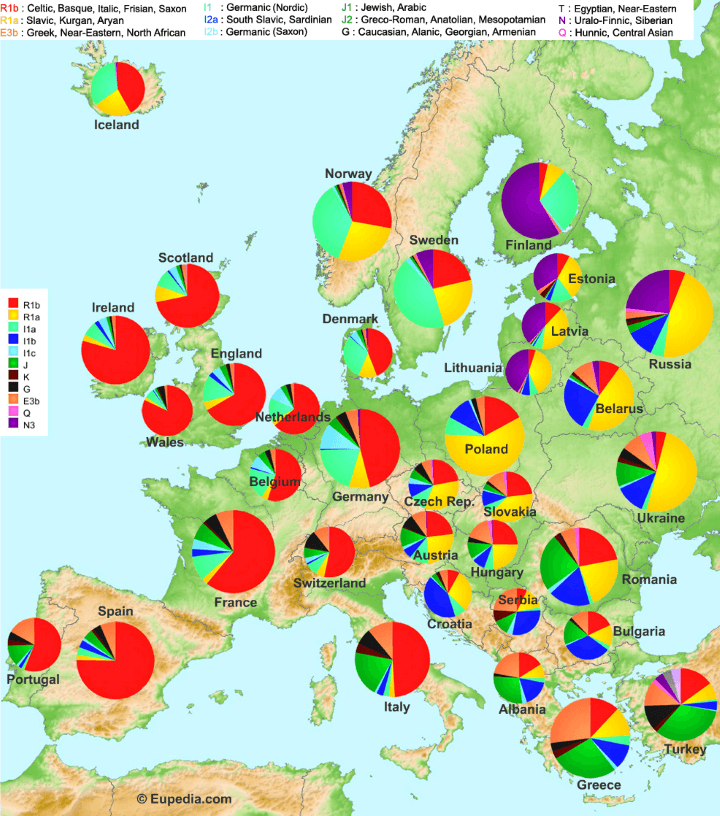
This map shows that even Iceland — one of the most ethnically and genetically homogeneous countries on earth because of its long isolation — has a population with multiple haplogroups and multiple lands of origin, including some Icelanders who are at least partially descended from Irish immigrants (whether they arrived of their own free will or as slaves taken in Viking raids is a source of controversy) as well as from the Norwegian Vikings who were the majority of the original settlers on the barren island.
So there is simply no such thing as a genetically ‘pure’ national population or national state just as there is no such thing as ‘Icelandic,’ Brazilian, Nigerian or Japanese genes; yet the commercials that Ancestry.com airs suggest that there’s a genetic basis for national identity. The danger of such false notions becomes apparent in the case of ethno-nationalist states such as Israel, based on a Zionist ideology that connects claim to the land to membership in a national group.
“We had a Jewish man in Canada ask us to make it look like he was from Israel. His results showed him to be from Eastern Europe, and based on his last name, we said it was all but certain his ancestors were from Poland. Judging by his family history, they probably came over around WWII, for reasons you can probably imagine. But no, he said he was Jewish and wanted ‘Eastern European’ changed to the area Israel is in,” Morgan, who works for one of the major ancestry testing companies, tells Cracked.com “, adding, “Israel is new … and by saying he’s from there by blood, we’d be saying he was Arab. We have changed things on occasion … and we played along with him over the phone. ‘Sure, we can change your ancestry to being from the near Middle East.’ We gave him the option of being more from Egypt, more from Syria, or more Arab. He wasn’t what you would call happy that those were his only options, and when operator asked him, ‘Would you like to be Arab?’ he slammed the phone down” (Evan V. Symon, “Inside the Shady World of DNA Testing,” Cracked, 4 December 2017).
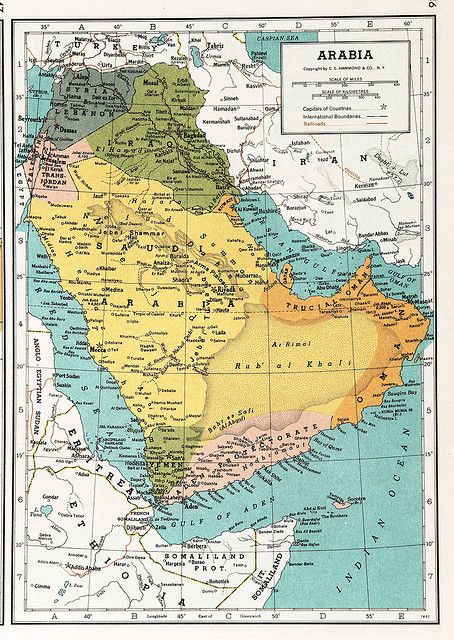
In fact, the Israeli government and the Orthodox rabbinate that controls religious life in Israel have begun to use DNA testing to confirm ‘Jewish identity’ as part of the institutionalization of discrimination that is pervasive in Israel (Oscar Schwartz, “What does it mean to be genetically Jewish?,” the Guardian, 13 June 2019); the truth that there is no such thing as ‘genetic identity’ or that religion cannot be confirmed by DNA testing seems not to have occurred to Israeli authorities.
All of which prompts a raft of questions about racial, ethnic and national identity as well as DNA testing itself. I have to begin by noting that science was along with math my worst subject in school and that I am as far from an expert on genetics as imaginable; that being said, I know a scam when I see one. By a scam, I do not mean DNA testing per se but rather the calculation of ‘nationality’ for those who get DNA testing through 23andme, Ancestry, or any of the other services that provide it. And that is because there is simply no such thing as a ‘Jewish gene’ any more than there is an ‘Italian,’ ‘Korean’ or ‘Nigerian’ gene; nor is there such a thing as ‘Asian,’ ‘European,’ ‘Middle Eastern,’ ‘African’ or ‘Native American’ genes. I’m a member of a group on Facebook specifically for Korean adoptees who do DNA testing through 23andme, and the inevitable question arises when someone does DNA testing and discovers that s/he is a X percent Korean, X percent Chinese, X percent Japanese, etc., especially among Korean adoptees who are not biracial or mixed race. The question has come up so often and apparently has discomfited enough people that one geneticist has even written up a short response for general dissemination:
Cathy Cutler
Ethnicity reports and why the disparity between reports from different consumer labs simplified explanation
There are 2 main reasons why some DNA reports show no Korean or little Korean in your ethnic breakdowns. Reason 1: The REFERENCE DATASET PANEL varies from company to company. The Reference Dataset is usually comprised of “Universal References” which are specific for certain populations e.g. Europeans, Han Chinese, Japanese, Western Africa etc. These “Universal References” that are specific to certain populations were created by the scientific community through an international research effort, so A LOT OF SCIENCE went into creating these references. The research to create a specific Korean Genome is still in its infancy. The reference panel used by companies is also comprised of their own proprietary reference collection usually collected from customer DNA samples who have consented to participate in research that is conducted in house-meaning within that company and mostly done with A LOT of statistical analysis, bioinformatics and proprietary algorithms. A national Korean Genome project was started in 2006 and some progress has been made to create a Korean Genome. The following link is a Nature publication which is a well respected journal within the scientific community with a high impact factor: https://www.nature.com/articles/nature20098. Reason 2: How the DNA technology is being used, limitations of currently DNA technology and how scientific research findings are being used from company to company. Each company is using a custom array/chip. This array consists of single nucleotide polymorphisms (SNP’s [pronounced Snips]), SNPs look at the genetic variation in populations. There are over a MILLION SNPS in the human genome but currently these arrays can only test for 600,000-800,000. All the testing companies are using same ~600,000 SNP but they can customize the other 100,000-200,000 SNP’s on their arrays. For example: Company A, may have a SNP that shows up in high frequency for those of Korean descent on their array and Company B may not have that same SNP. So Company A will show Korean in their ethnicity breakdown report but Company B will not. This will be the customized portion of the array. Addendum: When looking at potential genetic matches the DNA data is not compared to a reference but is a direct comparison to those in the genealogy database. This part of the test is fairly accurate and reliable-DNA does not lie. It is looking at segments of YOUR DNA sequence and matching it against DNA from others in the GENEOLOGY database. IT is a DIRECT COMPARISON TO POTENTIAL RELATIVES DNA segments. This is why you should test at all the DNA companies because your relative may have only tested at one company and their DNA data is only at that companies Genealogy database.
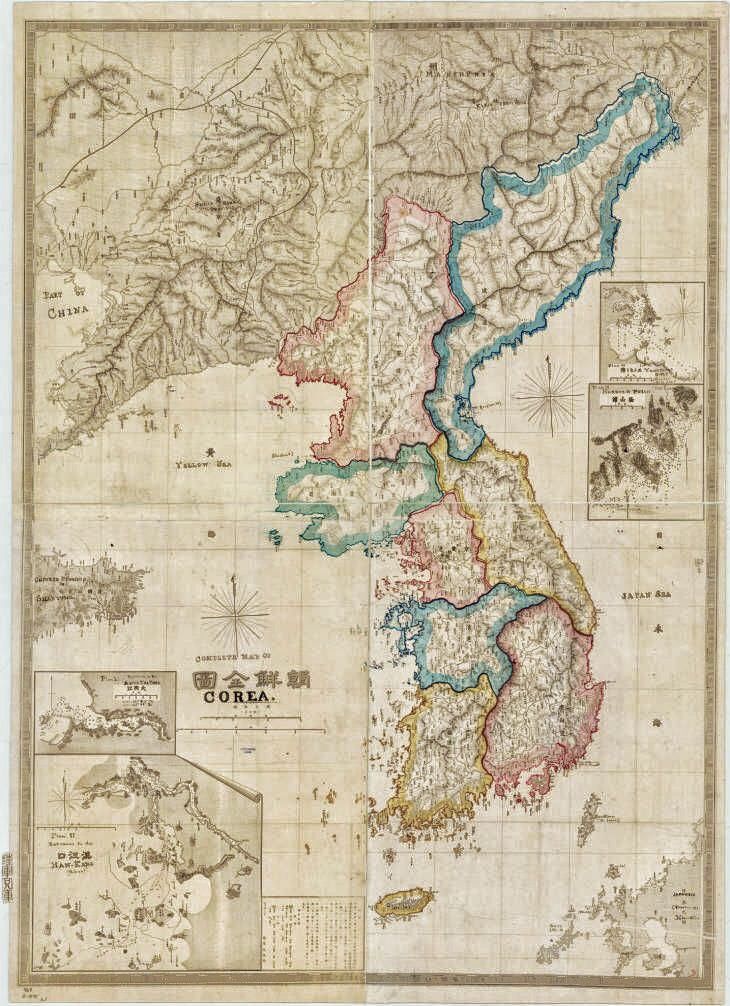
But here’s why that explanation doesn’t work: it begs the question as to whether there is in fact any such thing as ‘race,’ ‘ethnicity’ or ‘nationality’ with regard to DNA; and clearly, ‘Korean’ here is simply a referent referring to a given population defined in twentieth and twenty-first century terms; when our ‘Korean’ ancestors descended from eastern Siberia down into the Korean peninsula, there was no ‘Korea’ in any cultural or political sense; there was simply a peninsula hanging off the Asian continent settled by people from eastern Siberia. And the prosaic truth is that there is simply no such thing as a ‘Korean’ gene or an ‘Asian’ gene, simply DNA carried by people who lived in certain territories we now identify as ‘Korea,’ ‘Asia,’ ‘Germany,’ ‘Europe,’ ‘Nigeria,’ ‘Africa,’ ‘Brazil’ and ‘South America.’ And yet, DNA testing has become increasingly common as the cost of it has fallen enormously and it is being regularly used now to help ‘consumers’ to identify their ‘race,’ ‘nationality’ and ‘ethnicity.’
What for some is a fun little parlor game for others has taken on considerable political significance, nowhere more obvious than in the case of Elizabeth Warren, a Democratic member of the United States Senate from Massachusetts who is a potential 2020 presidential candidate and who has regularly been ridiculed by Donald Trump (both before his election as president in 2016 and since) as ‘Pocahontas’ for the family story she has often repeated about having ‘Cherokee blood’ in the family (Aviva Chomsky, “The DNA Industry’s Role in the Erosion of Native Rights,” Truthdig, 2 December 2018). Far from putting the issue of her ancestry to rest, Warren’s public announcement of the results of her DNA test drew criticism from left and right alike, with Donald Trump ridiculing her and the Cherokee nation blasting her for it.

“Using a DNA test to lay claim to any connection to the Cherokee Nation or any tribal nation, even vaguely, is inappropriate and wrong. It makes a mockery out of DNA tests and its legitimate uses while also dishonoring legitimate tribal governments and their citizens, whose ancestors are well documented and whose heritage is proven,” said Cherokee Nation Secretary of State Chuck Hoskin Jr. in an official statement on behalf of the Cherokee Nation in which Hoskin accused Warren of “undermining tribal interests with her continued claims of tribal heritage” (Alexander Bolton, “Cherokee Nation: Warren’s use of DNA test ‘inappropriate’, ‘wrong’,” The Hill, 15 October 2018). “No native tribe acknowledges DNA testing as a source for citizenship or even claim to native heritage,” said Rebecca Nagle, an indigenous writer, organizer and citizen of the Cherokee Nation, in response to Warren’s public announcement, and as Alexander Bolton noted in the same news report for The Hill.
“In turning to the burgeoning, for-profit DNA industry… [Elizabeth Warren] implicitly lent her progressive weight to claims about race and identity that go hand in hand with moves to undermine Native sovereignty. The DNA industry has, in fact, found a way to profit from reviving and modernizing antiquated ideas about the biological origins of race and repackaging them in a cheerful, Disneyfied wrapping. While it’s true that the it’s-a-small-world-after-all multiculturalism of the new racial science rejects nineteenth-century scientific racism and Social Darwinism, it is offering a twenty-first-century version of pseudoscience that once again reduces race to a matter of genetics and origins. In the process, the corporate-promoted ancestry fad conveniently manages to erase the histories of conquest, colonization, and exploitation that created not just racial inequality but race itself as a crucial category in the modern world. Today’s policy attacks on Native rights reproduce the same misunderstandings of race that the DNA industry is now so assiduously promoting. If Native Americans are reduced to little more than another genetic variation, there is no need for laws that acknowledge their land rights, treaty rights, and sovereignty. Nor must any thought be given to how to compensate for past harms, not to speak of the present ones that still structure their realities,” Aviva Chomsky wrote in response to the controversy (Aviva Chomsky, “The DNA Industry’s Role in the Erosion of Native Rights,” TruthDig, 2 December 2018).

It was the Swedish scientist Carl Linnaeus (1707-78) who created the racial taxonomy that still dominates public discourse today and that the DNA testing industry has unfortunately reintroduced to the world (Michael Yudell, “A Short History of the Race Concept,” Briefing Paper #1, Council for Responsible Genetics). Linnaeus divided the human population into four races: Americans, Asiaticus, Africans and Europeaeus. Later, the German scientist Johann Blumenbach proposed five racial types: Caucasian, Mongolian, Ethiopian, American and Malay, with the Causaisn as the ideal (‘mean’) race, with the other four races inferior extremes diverging from that ideal mean.
As a Korean adoptee, I have particular thoughts about this practice of citing ‘nationality’ figures. Hardly a day goes by when I don’t see someone post a comment in a Facebook group for Korean adoptees to the effect that “I’m so surprised that I’m part Chinese and part Japanese; I thought I was all Korean~!” Sometimes, the comment suggests a degree of distress; which is why the calculation of ‘nationality’ composition is so irresponsible and even more so the calculation of ‘race,’ where ‘Asian,’ ‘European’ and ‘African’ are substitutes for the old racial categories in the classification developed by Linnaeus (1707-1778) in 1758, a taxonomy some now call ‘scientific racism.’ Certainly, the old Linnaean categories sound outdated at the very least; ‘Caucasoid’ is absurd given that the only true ‘Caucasians’ are the peoples of the Caucasus region; ‘Negroid’ sounds like a racial slur and ‘Mongoloid’ has been fatally compromised by its use with regard to those with birth defects involving developmental disabilities.

Anyone whether a transracial adoptee or otherwise should regard the racial references in these reports from DNA testing companies with more than a jaundiced eye and should regard the nationality composition figures as little more than fabrications, even if the haplogroup information is informative and even fascinating. That all being said, the use of racial classifications by these DNA testing companies has had one salutary effect, which is challenging white supremacists to reconsider their unscientific and irrational racial prejudices, especially those who are told by these testing companies that they are not entirely of ‘European’ descent. Of course, contemporary biology and genetics have thoroughly demolished the problematic Linnaean taxonomy that these companies are using, so what exactly are they doing when they calculate ‘race’ and ‘nationality’ if there’s no such thing as genetic race or nationality?
“As genetic ancestry tests have become more accessible, there has been a rising trend of white nationalists using them to prove their racial identity. In a new study, Aaron Panofsky and Joan Donovan, sociologists from the University of California in Los Angeles, investigated how these white nationalists reacted to the results they received from genetic ancestry tests (GATs). As the researchers told the annual American Sociological Association conference in Montreal on August 14 (coincidentally, just 48 hours after the violent white nationalist rally in Charlottesville), they are often disappointed when the results are not as ‘white’ as they’d like,” Alyssa Braithwaite reported for SBS in 2017 (Alyssa Braithwaite, “White supremacists taking DNA tests often don’t like what they reveal,” SBS, 18 August 2017), quoting Panofsky and Donovan as writing, “It would be a serious mistake to view white nationalists as ignorant or stupid or as straightforwardly wrong in the way they are interpreting GAT and population genetics… The information population geneticists have produced is quite available for racist interpretations…”
As a lay person with no background in genetics, I can only guess that what these companies are doing is calculating the distribution of haplogroups across geographic areas and continents over certain time periods, because the identification of one’s haplogroups is in fact scientific even if the identification of ‘race’ and/or ethnicity or nationality by DNA is entirely pseudo-scientific. That of course begs the question as to what precisely a haplogroup is.
First of all, it is crucial to note here that haplogroups do not correspond to ‘nations’ let alone what are called ‘nation-states’ (though there are hardly any true ‘nation-states’ in this world, with the possible exception of Iceland, Japan and a few other island nations; virtually all of the countries of the world are ‘national states’ but in no real sense ‘nation-states’). No country on earth has a homogeneous population composed solely of members of only one haplogroup. In fact, national boundaries have shifted enormously over the centuries and nowhere more dramatically perhaps than in Eastern Europe where World War I brought an end to the polyglot Habsburg Austro-Hungarian empire ruled from Vienna by the German-speaking elite.
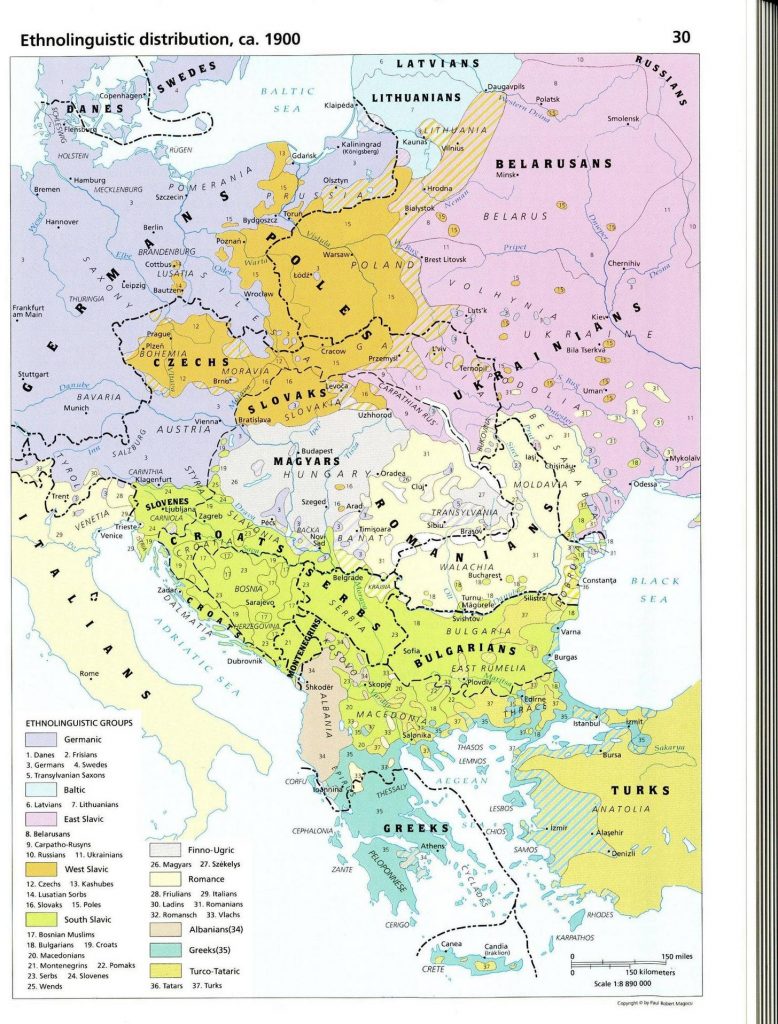
The term ‘Balkanization’ has come into common parlance in English precisely because of the ethno-linguistic diversity of the Balkans and southeastern Europe and the tendency of ethno-nationalism to produce ‘clumping’ into smaller and more homogeneous units since the collapse of the Habsburg and Ottoman empires that ruled most of southeastern Europe from the age of Suleiman the Magnificent down into the age of nationalism in the nineteenth century. From 1648 to 2009, ‘national’ borders — not so much the borders of national states much less ‘nations’ so much as the borders of multi-national empires and smaller principalities — shifted dramatically, with the receding Ottoman empire giving way to Hungary and what eventually became Romania as well as Bulgaria and Yugoslavia, itself to implode in the Balkan wars of the late twentieth century. Not surprisingly, southeastern Europe evidences considerable genetic diversity and none of these ‘nations’ or national states are homogeneous, even the smaller states created by the violent break-up of the former Yugoslavia. ‘Nations’ like ‘states’ must be understood as social constructions and states in any era stand in relatively arbitrary relation to nations almost everywhere, with just a few small island countries such as Iceland being the rare exceptions.
Given all the foregoing, it is necessary to abandon any notion that the there is such a thing as Icelandic, German, Finnish, Hungarian, Korean or Japanese genes, let alone Nigerian or Brazilian genes. There are, rather, gene pools or families known as ‘haplogrouπs.’ So what is a haplogroup? “In essence, haplogroups are a pedigree chart of the clans of humanity,” writes Roberta Estes (Roberta Estes, “What is a Haplogroup? DNAeXplained,” Genetic Genealogy, 24 Jan. 2013), and adding, “Think of a haplogroup as an ancestral clan, a large family, like the Celts, or Vikings. These would be larger than Native American tribes, encompassing members of many tribes. There are two male Native American haplogroups that include all Native American males. There are a few more African clans, or haplogroups, but not many.” Notes Estes, “Y DNA is passed from father to son, only, through the Y chromosome which only males possess. There are also clans for mitochondrial DNA which follows the direct maternal line up your family tree. This means your mother, her mother, her mother, etc. Women give their mitochondrial DNA to all of their offspring, males and females, but only females pass it on…”
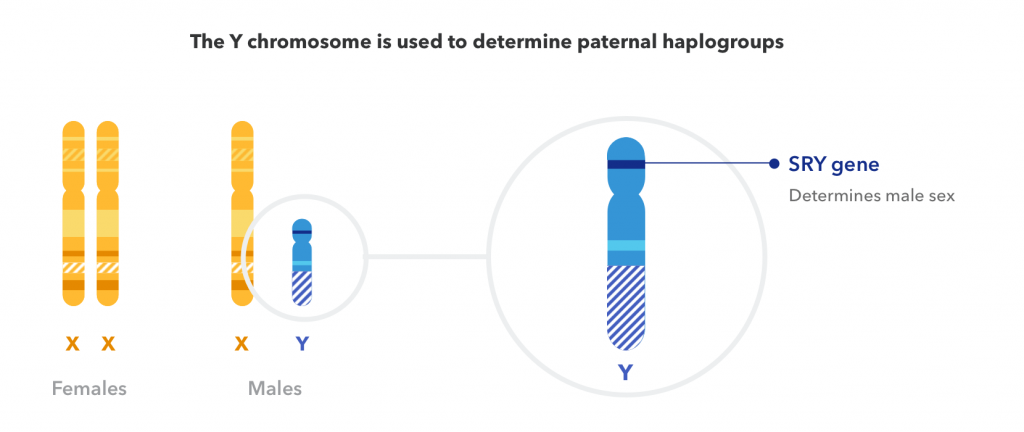
If the generally accepted theory that homo sapiens originated in the Rift Valley of eastern Africa eons ago, then haplogroups are simply a kind of genetic mapping of our human migration out of Africa into the Near East and thence across Asia and into Europe and North American and South America. As I understand it as a lay person with limited background in genetics, these haplogroups are gene ‘families’ of a sort, classified by letters of the alphabet, and through this classification system, we can trace that movement across every continent except Antarctica from homo sapiens’ emergence out of the hominid mix in Africa to every corner of the world. And so those who use 23andme, Ancestry.com or any other of the companies that are profiting from identifying the gene pools we are members of should regard the percentages of ‘race’ — rather thinly and disingenuously disguised using essentially geographic terms such as ‘Asian’, ‘African’ and ‘European — and nationality as pseudoscientific. The science is to be found in the identification of these haplogroups, and I can only guess that it is from the haplogroup data that these companies produce these bogus percentages concerning ‘race’ and ‘nationality’ from speculation concerning the geographic dissemination at some unspecified point in time in the very distant past.
To give an example, if you are told that your DNA is ‘East Asian and Native American’ (yoked together not illogically given that Native Americans are descended from the ‘Asians’ who crossed the Bering Strait when it was frozen over millenia ago) and that your ‘nationality’ is X percent Korean, X percent Chinese and X percent Japanese, then look to your haplogroups to see where such classification comes from; in all likelihood, it is because whoever it is does these calculations at 23andme or Ancestry or National Geographic or any of the dozens of companies now getting into the DNA testing business has made the calculation that at a certain point in time, your haplogroups — let’s say D and O, for example — were dispersed across East Asia, with a certain percentage of each haplogroup located in what is now China, a certain percentage in what is now Korea, and a certain percentage in what is now Japan.
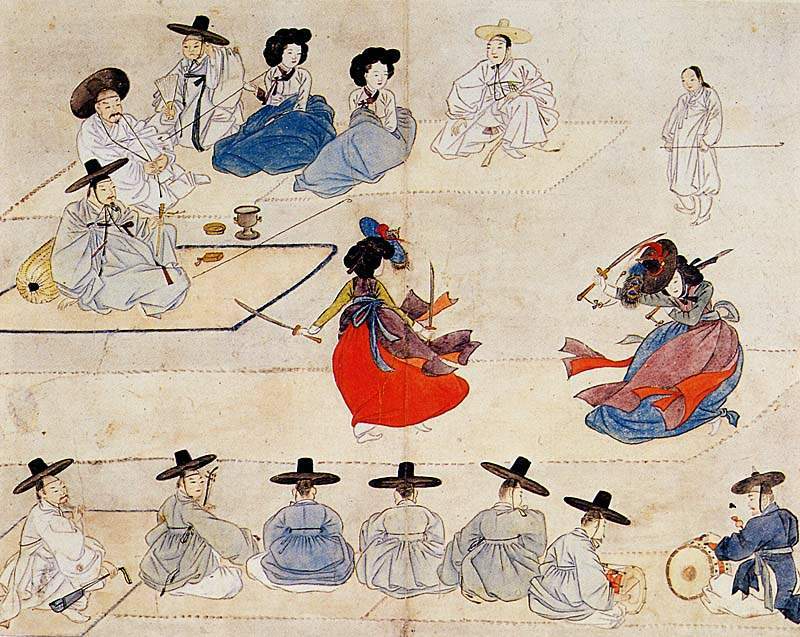
I should say at this point that I have no particular investment in being declared ‘pure Korean’ since there is no such thing as ‘pure’ anything and since it is patently obvious that there is no such thing as ‘Korean’ genes any more than Finnish, Ivoirian, Bolivian or Australian genes. I would have no objection to discover that some of my ancestors were Japanese or Chinese or of African or European descent for that matter. My self-identification ultimately defies any classification scheme or taxonomy because I recognize that all such identity formations are social constructions with a relatively arbitrary relationship between ‘signified’ and ‘signifier’ — in my case, me and the labels I would use to identify myself or the taxonomic terms that would be used to classify me. Of course, I use terms of self-identification as we all do in order to make myself understood to other people; I identify as an openly transgendered woman of Korean birth and I use various terms such as ‘Korean adoptee’ and ‘Asian American’ to communicate identity and identities to others, depending on the situation. I call myself a ‘person of color’ or ‘woman of color’ while recognizing that these terms are just as socially constructed as terms that are either based on scientific (or pseudoscientific) classification schemes or more overtly political taxonomies.
But of course, even more overtly politically ‘progressive’ terms do not get us out of the conundrum of identity and especially identity in the age of DNA testing: people of color can and do engage in problematic discourse on race, nationality and identity as well, Indian prime minister Narendra Modi being just one case in point (Rupam Jain and Tom Lasseter, “By rewriting history, Hindu nationalists aim to assert their dominance over India,” Reuters, 6 March 2018). Problematic use of identity politics frameworks is of course hardly limited to to the prime minister of India and can be found in every culture and society. And it is one of the most unfortunate consequences of the vogue for DNA testing that it is reifying (one is tempted to say, ‘re-reifying’) pseudoscientific classification schemes that are the contemporary residue of Linnaeus and other figures from the European Enlightenment and the Scientific Revolution.
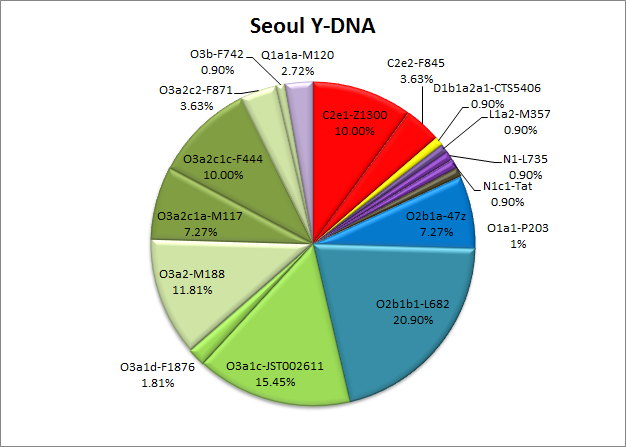
That all being said, I have no regrets whatsoever about doing DNA testing, all the more so given that as an intercountry transracial adoptee, I have no ‘family medical history.’ And I have discovered and connected with cousins with whom I am genetically related and become good friends with a few of the ‘new’ cousins I have met through DNA testing. And even if I still do not know anything about my birth parents, I now have at least a few interesting facts about their ancestors, based on the DNA testing I did a few years back which I could not have found in any other way. So my advice to those considering DNA testing is to understand what it can tell you and what it can’t: it can tell you what haplogroups you are a member of and it can give you some sense of where your very distant ancestors came from; it cannot tell you anything about your ‘race,’ ‘ethnicity’ or ‘nationality’ because such things are social constructions that have nothing to do with your genes. It cannot tell you who you are or give you an identity if you do not have one (or at least not one you’re entirely satisfied with); only you can determine that. And so while it may sound paradoxical, I was born in Korea but I have no Korean genes because no one does.
